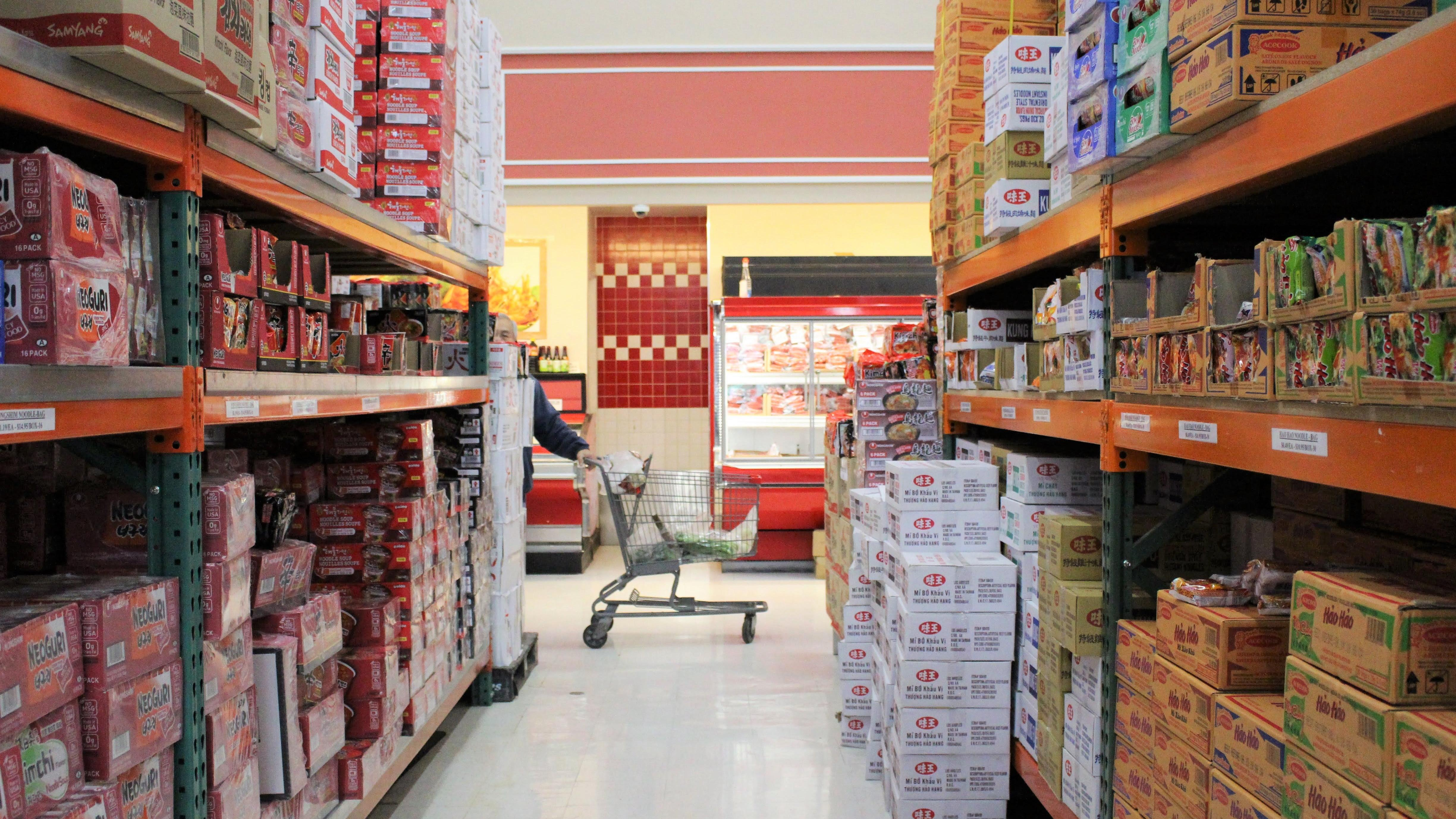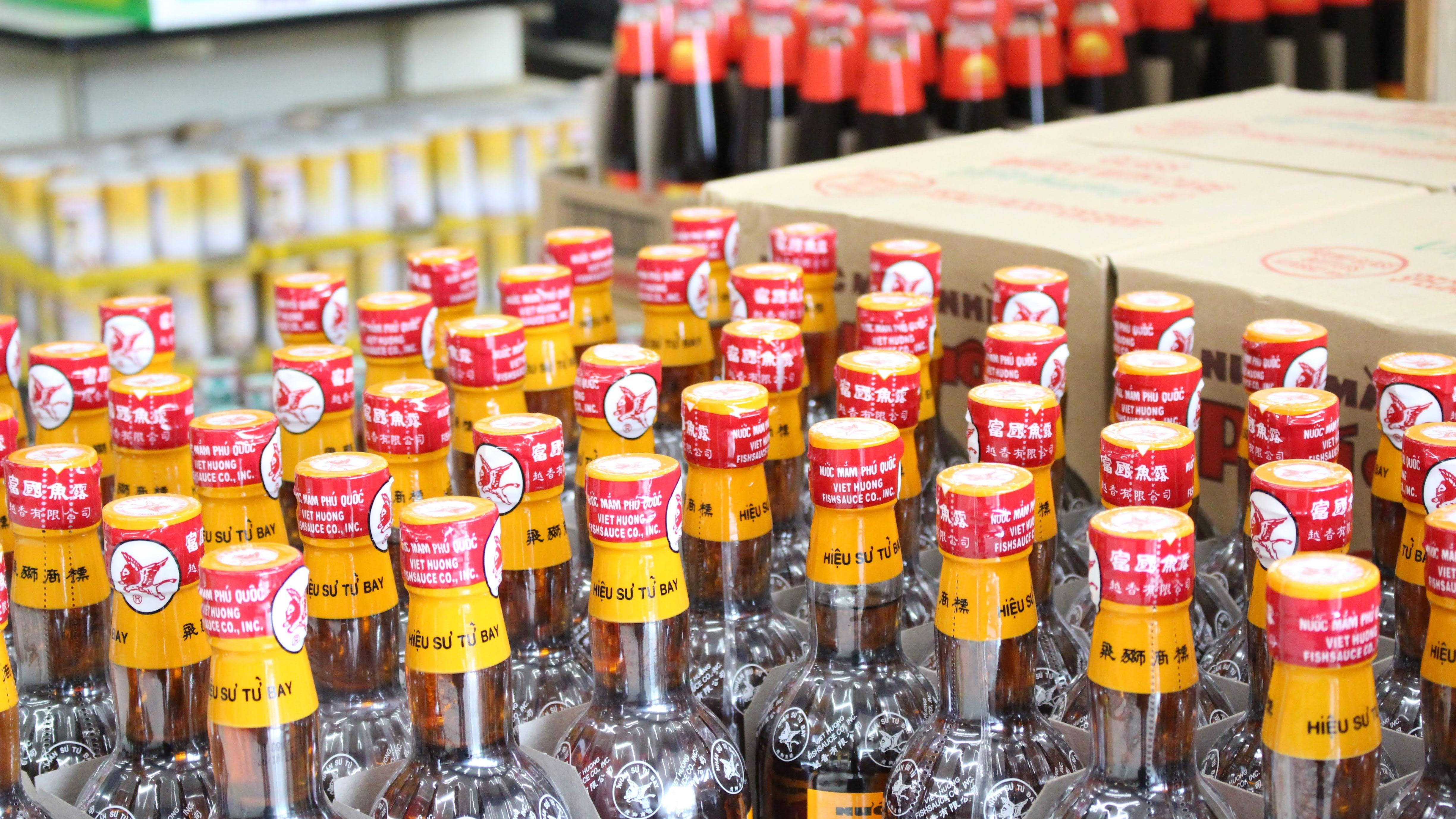How To Shop Asian Supermarkets Without Missing The Best Stuff
The Asian supermarket is a place to experience new foods and a sense of community.
Every Saturday, I take my mom to Pacific Market, a moderately sized structure that stands behind a tall building in progress. With my two kids in tow, my mom and I enter a place that is so common to us—not because we go there almost every weekend, but because as Asian Americans, we know exactly how it works and what to expect.
For many others, including my husband, who is Caucasian, shopping at an Asian supermarket comes with its own set of anxieties, mainly a language barrier. Not only are there words you don't understand but the unsettling feeling of not being able to find what you need, along with unfamiliar products and scents and the fact that, location-wise, Asian supermarkets are generally on the outskirts of town. Thus, making the drive to one can sometimes be a trip in and of itself.
An Asian supermarket is, in fact, its own world. A world of new and interesting smells, of things you can't pronounce, of people you never would've run into otherwise, of delectable snacks and treats from around the world. Pallets of food stacked five feet high greet you as you enter; sometimes there are even some lingering in the aisles, waiting for employees to stock them. Giant squid and lobsters floating in large glass cases may look alien and scary but to me remain curiously familiar. Fifty-pound bags of rice and deli items in shrink wrap that always reminds me of glass or hardened sugar coating waiting to be broken apart and devoured. For me, these things conjure up feelings of familiarity and continuity, the kind you might get when you think of your grandparents' house.
For immigrants, these markets can be an anchor to their broader community. A place where many people, including some of my relatives, begin their first jobs upon arriving in America with little English skills, and over time, gain a foothold in their new country. A place for people of all races to socialize, to gather and exchange ideas and recipes and stories with one another. A place to find some semblance of their old life through food as they begin to transition to their new life here in the West. A place where they can find more than just groceries: ointments, creams, handheld bathroom mirrors, Buddha statues, incense. Even money transfer services are a part of Asian supermarket culture.
If you're interested in making your first trip to an Asian supermarket, the following tips will have you navigating the aisles like a pro in no time.
Come prepared with a shopping list
Making a shopping list is a smart thing to do no matter where you shop, and an Asian supermarket is no exception. Begin by selecting a particular dish that requires ingredients that you'd only find at an Asian supermarket, things like crab paste with bean oil, vermicelli noodles, shredded dried pork, fried tofu, Japanese Kit Kat bars, black sesame crackers, dried black fungus, and Vietnamese pork roll, to name a few.
Unlike standard American grocery stores, some Asian supermarkets do not have aisle signs indicating which type of items are in which aisle. Scan everything slowly as you go along. It may help to save a few photos on your phone for reference so you know what to look for.
Be aware of different smells
Perhaps the biggest shock to your senses is the smell that permeates many Asian supermarkets when you enter a store. Fishy smells combined with animal parts on open display (like limbs, intestines, heads, and feet) and vinegar from all the pickled items is a very normal bouquet.
In many Asian cultures, displays of freshness are one of the most important aspects of shopping for food. The result is that seafood such as crabs, lobsters, and clams will often be on display along with whole animal bodies to provide customers the assurance that everything is fresh and processed in front of them. From fermented tofu to kimchi, there are a variety of different ways cultures have sought to preserve their foods, and sometimes powerful smells come with the territory. As you wander the aisles, be sure to pick up items and hold them up to your nose, inhaling all the different scents. Things like taro and lemongrass and durian have distinctive smells, all worth exploring.
Use a translation app
As you navigate the aisles, you'll see that certain items' prices are either not labeled in English or not labeled at all. Select a particular brand of curry powder, for example, and you may not understand any words on the package. This is perfectly fine, and is the reason why having a translation app handy is important. I like to use Google Translate for languages because it provides a variety of ways to translate words I don't understand, but there are, of course, other apps to consider.
Be open to talking to strangers
Whether you're an introvert or an extrovert, it can be awkward to walk up to someone who may not speak the same language as you and ask them a question, but to me, this is the best way to learn. After all, translation apps and shopping lists can only go so far.
Whenever I shop at my local Asian supermarket with my husband (who is not fluent in Vietnamese), I often see him walk up to someone, tap their shoulder while holding out a product, and ask them a question about it. The image of the person responding cordially in their broken English and my husband's limited Vietnamese reminds me that, language barriers aside, we're all here for the same reason: because we enjoy Asian foods and we want to cook them.
Set your previous expectations aside
For most Asian supermarkets, there is no such thing as coupons or discounts, with the exception of 99 Ranch Market, which does embrace the coupon model by handing out a store coupon if you spend over a certain amount. Rarely, if ever, are there sales on items, but prices at these stores are generally lower than the smaller curated ethnic aisles at standard American grocery stores.
Customer service is not defined by greetings at the door, nor by legions of sales associates roaming the floor asking how they can help. Instead, the store is likely to prioritize consistently stocked shelves and routinely fresh items without huge price fluctuations in order to demonstrate care for the shoppers.
Many stores also show customer appreciation by altering products and displays to showcase culturally important events happening in the community. Chinese grocery stores might feature food items of minority groups within that country such as Mongolians and other larger Asian populations in their community like the Vietnamese during Tet, or Chinese New Year. Many cities and towns only have a few Asian grocery stores; thus, having an open mind and perusing some of these once-a-year displays is a great opportunity to broaden your horizons.
When in doubt, ask questions, and be open to being surprised by the wonderful world of Asian cuisine that you've just entered.

